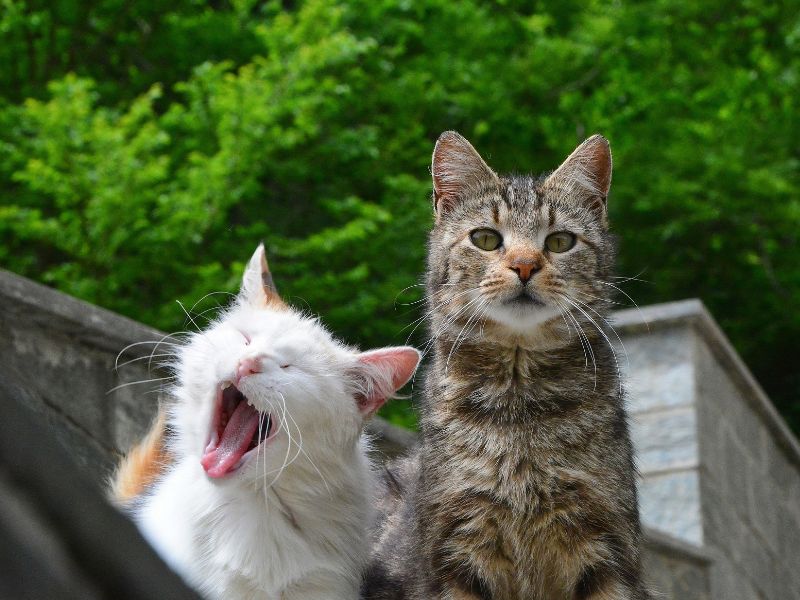Adding a new cat to your household can be an exciting experience, but it can also be a challenge, especially if you already have a furry friend at home. Introducing two cats can be a tricky process that requires patience, care, and attention. If you’re thinking of bringing a new feline friend into your home, it’s important to take the time to introduce them properly to your existing cat. This will help ensure that both cats feel safe, comfortable, and happy in their new environment. In this article, we’ll share some tips and tricks on how to introduce a new cat to your existing one, so you can create a peaceful and harmonious household for all your furry friends. So, let’s get started!
Why Introducing a New Cat to Your Existing One is Important
Introducing a new cat to your household can be a stressful time for both your existing cat and the new arrival. It’s important to take the time to introduce them properly to avoid any potential conflicts or issues. Cats are territorial animals, and introducing a new cat into their space can cause them to feel threatened, anxious, and stressed. This can lead to aggressive behavior or avoidance, making it difficult for both cats to adjust to their new living arrangements.
By introducing your cats slowly and carefully, you can help them build a positive relationship, which will make for a peaceful and happy household. Proper introductions will also help your cats feel comfortable and secure in their new environment, reducing their stress levels and promoting a healthy and happy life.

Introducing Scents and Sounds
Before you introduce your cats, it’s important to let them get to know each other’s scent and sound. This can help reduce the stress of meeting a new cat and make the introduction process smoother. Start by swapping bedding or toys between the two cats, so they can get used to each other’s scent. You can also feed them on either side of a closed door, so they can hear each other’s noises while being separated.
Once both cats are comfortable with each other’s scent and sound, it’s time to introduce them face-to-face. Start by keeping them in separate rooms, and allow them to sniff each other under the door. This will help them become familiar with each other’s scent and reduce the stress of meeting a new cat.
Managing the First Few Days
When it’s time to introduce your cats face-to-face, it’s important to do so slowly and carefully. Start by opening the door a crack and allowing them to sniff each other while being supervised. If they show any signs of aggression or fear, separate them immediately and try again later.
Keep the interactions short and positive, and make sure both cats have plenty of space to retreat to if they feel overwhelmed. It’s also a good idea to provide each cat with their own food, water, and litter box, to avoid any potential conflicts. As the days go on, gradually increase the amount of time the cats spend together, and make sure to supervise their interactions at all times.
Common Issues and How to Address Them
Introducing two cats can be a challenging process, and you may encounter some common issues along the way. Here are some of the most common issues and how to address them:
- Aggression: If one or both cats show signs of aggression, such as hissing, growling, or swatting, separate them immediately and try again later. Gradually increase the amount of time they spend together, and reward them with treats and positive reinforcement when they are calm and relaxed.
- Fear and Avoidance: If one or both cats are avoiding each other or seem fearful, it’s important to give them plenty of space and time to adjust. Provide each cat with their own hiding spot and encourage them to explore their new surroundings at their own pace.
- Marking and Litter Box Issues: If one or both cats start marking their territory or having litter box issues, it’s important to address the issue immediately. Provide each cat with their own litter box, and make sure to clean them regularly. If the issue persists, consult with your veterinarian to rule out any medical issues.

See Also: How to Train Your Cat to Use a Litter Box
And: The Most Popular Cat Breeds and Their Personality Traits
Long-Term Care for Multiple Cats
Once your cats have adjusted to each other and are living peacefully together, it’s important to provide them with long-term care to keep them healthy and happy. Here are some tips for caring for multiple cats:
- Provide plenty of space: Each cat should have their own space to retreat to when they need some alone time.
- Provide plenty of resources: Each cat should have their own food, water, and litter box, as well as their own toys and scratching posts.
- Regular vet visits: Make sure to take your cats for regular check-ups and vaccinations to keep them healthy.
- Playtime and exercise: Provide plenty of opportunities for playtime and exercise, such as toys, cat trees, and interactive games.
Conclusion
Introducing a new cat to your existing one can be a challenging process, but with patience, care, and attention, it can be a successful and rewarding experience. Remember to take the time to introduce your cats properly, and be patient as they adjust to each other. With a little bit of love and patience, you can create a peaceful and harmonious household for all your furry friends.

